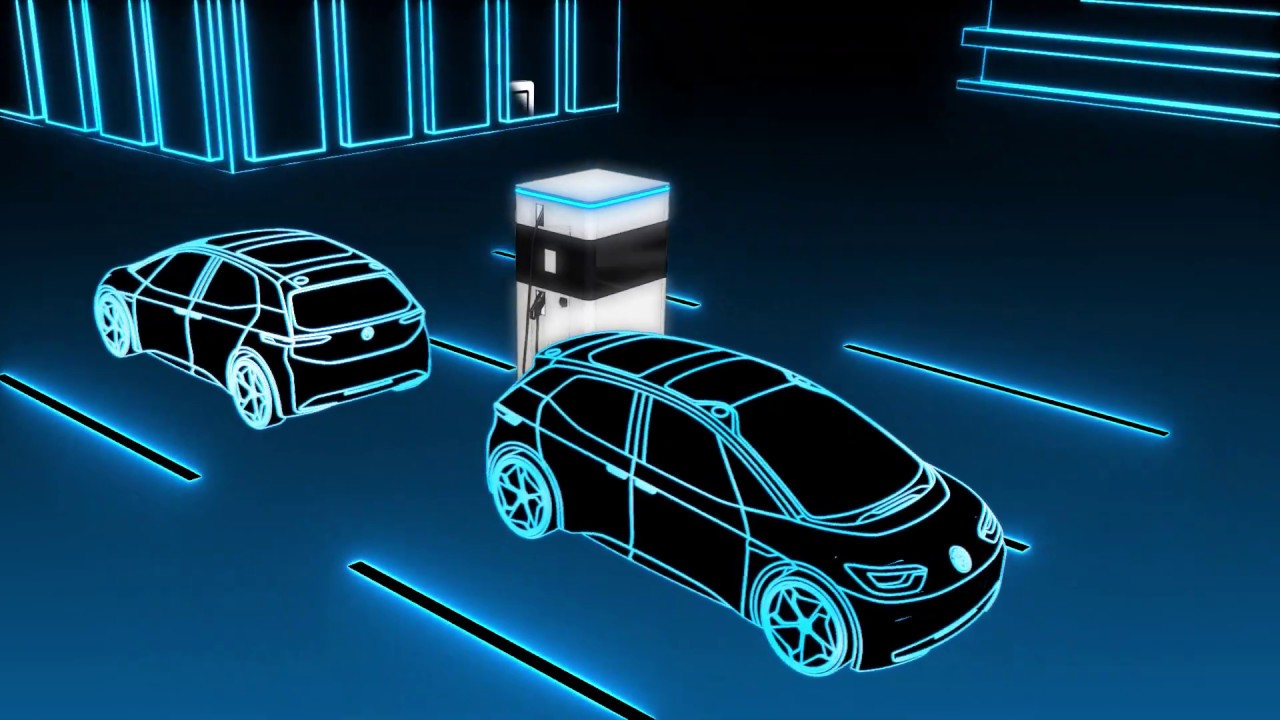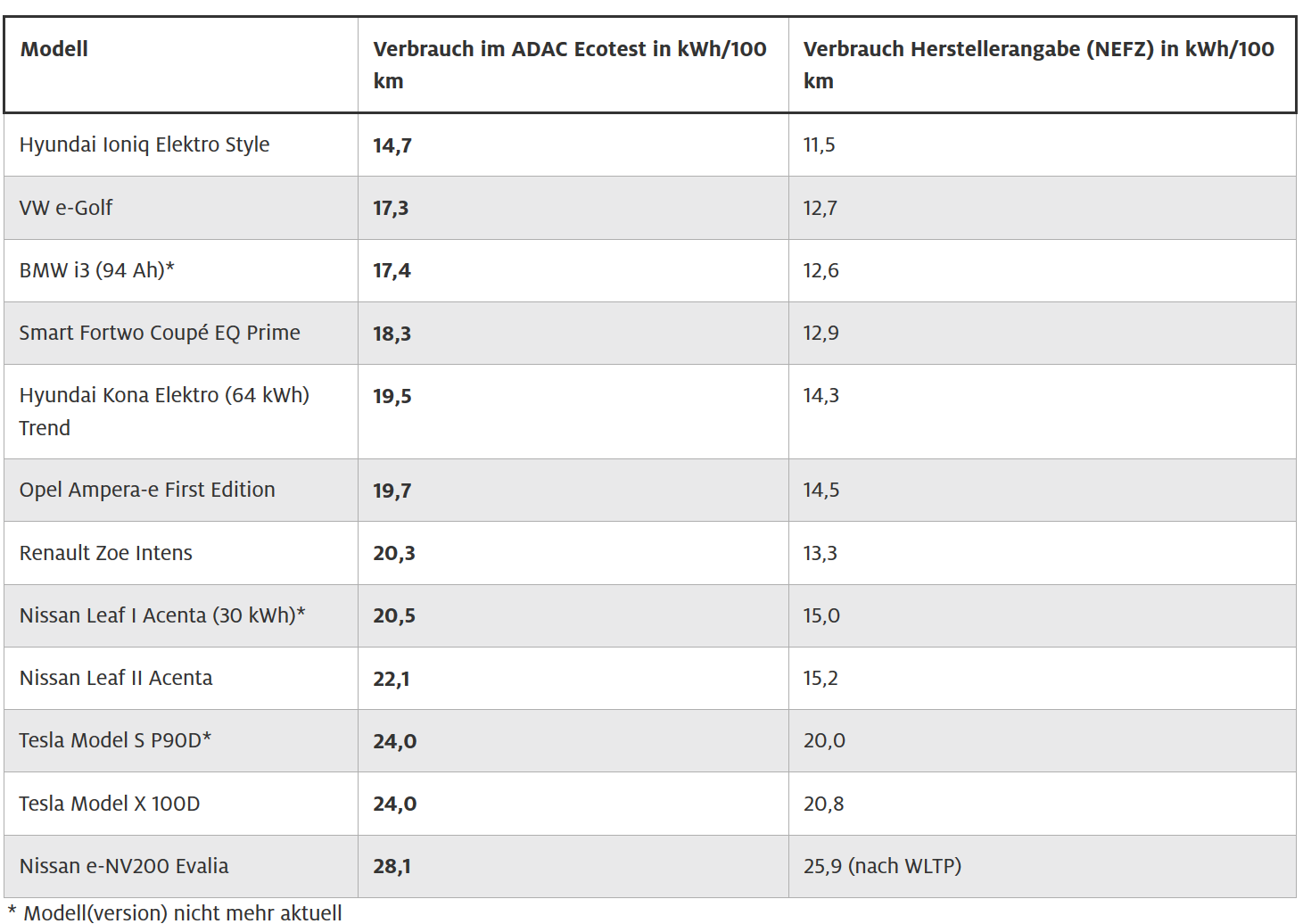In Germany, the cost of a trip on an electric car may be higher than on a diesel car.

In Germany, dissatisfaction is gradually growing in the community of electric car enthusiasts, due to the strong increase in electricity prices at charging stations. Depending on the service provider and the terms of the contract, the price for fast charging stations of direct current, especially relevant for those who travel a lot, can range from 39 to 89 cents per kWh of electricity. As a result, under certain conditions, the cost of a trip on an electric car is higher than on a diesel one. Unfortunately, no improvements are expected so far.
According to BDEW (Verband der Energie- und Wasserwirtschaft), the average electricity price for German households in January 2019 was 30.22 cents per kWh. To the amount of energy stored by the battery of the car, you should also add the charge loss, which, depending on the degree of optimization of the system, can range from a few percent to 25%.
Home charging stations with power up to 22 kilowatts are usually AC charging stations, while fast charging stations such as Tesla Supercharger are direct current. Many charging stations in public places also give out up to 22 kilowatts and give out alternating current. At the moment, only Renault Zoe and some Tesla with a “dual” charger are able to charge, realizing all 22 kilowatts, most of the remaining electric vehicles will use from 3.7 to 11 kilowatts. These charging stations, however, are quite important, because they allow a relatively budget way to increase the number of points for charging. The station (without installation) for 11 kilowatts costs around 700-900 euros, an option for 22 kilowatts - already about 2000 euros. However, those who travel long distances on an electric vehicle need powerful fast-type charging stations that use direct current. These charging stations are usually located along the autobahns, or near traffic interchanges. Their power can be 50, 100 or even 350 kilowatts. An example to follow can be, again, Tesla Supercharger, offering places to charge 8 or more cars. But the automaker from California has already passed the time of "gratuitous electricity." Model 3 buyers will pay an average of 40 cents per kWh, in some cases up to 44 cents. Model 3, subject to maintaining a constant speed on the autobahn, consumes 20.8 kWh of electricity per 100 km of track. The leader in this discipline is Hyundai Ioniq with an actual consumption of 14.7 kWh.
')
This is how ADAC measurements for other cars look like.

At a cost of 40 cents per kWh of electricity, it turns out that every 100 km on Model 3 will cost 8.32 euros, for this money you can buy 6.5 liters of diesel at 1.28 euros per liter, or 5.7 liters of gasoline at 1.47 euros per liter. In the case of a diesel car, the consumption on a car comparable to the Tesla Model 3 in size may well be below 6.5 liters. With a quiet ride, even a Mercedes E-Klasse with a diesel engine of the OM654 series is content with less fuel. Those interested can see the user statistics on spritmonitor.
At a speed of 160 km / h, the Tesla Model 3 will require 30 kWh of electricity per 100 km of track, which is equivalent to the cost of 9.4 liters of diesel. Moreover, all these calculations do not take into account the losses that inevitably arise in the process of charging an electric vehicle.
According to the results of ADAC measurements, the losses during charging are as follows:
The Tesla Model X100 D required 108.3 kWh to fully charge the battery for 100 kWh, for the Opel Ampera-e 67.4 for the battery 60 kWh and for the BMW i3 32.6 for the battery 27.2 kWh. Full table with measurement results:

The cost of electricity at the charging stations in Baden-Württemberg EnBW (Energie Baden-Württemberg) from March 1, 2019 is 39 cents per kWh for “customers” (plus a subscription fee of 5 euros per month) or 49 cents for everyone else.
One may reproach providers with the desire to maximize profits, but in reality the service provider is currently obliged to pay all the same taxes and charges for electricity as the ordinary household. Thus, the output of electricity can not be cheaper than the average price for the end user. Plus, you need to compensate for the cost of installing a charging station, transformer, software and maintenance.
High prices at fast charging stations lead to a double effect: on the one hand, the owner of the car will try not to charge at this station more than he needs at the moment and thus will quickly release the scarce charging point, on the other - motorists will be forced to reduce the speed , because for electric vehicles there is a simple rule: “go quieter - you will come faster”.
Thus, the problem of a relatively small power reserve for electric vehicles is added by the additional problem of the high cost of charging at fast charging stations.
Source of
ADAC carried out calculations of the cost per kilometer for a large number of electric vehicles and cars comparable to them with the engine. They used the value of 30 cents per kWh of electricity, which is applicable only to personal charging stations installed in the garage and / or in their parking lot. The study itself is available here . Even without knowing the German language, you can understand what is at stake by scrolling to the tablet.
In the previous article, “ The VW study shows the ecological profitability of the Golf-E after 100,000 km of run, ” the issues of the ecological profitability of electric vehicles from the point of view of CO2 emissions at the production and operation stages were also considered. This study was published by VW a few days after the appearance of the IFO Institute’s study , in which they concluded that a diesel car is ultimately more “environmentally friendly” compared to an electric car. VW tried to show in his research that everything, in fact, was not so bad. But in comparison, different cars are used. VW shows that the main source of CO2 emissions in the production of an electric vehicle will be the battery itself, even in the case of a 36 kWh battery, it accounts for more than half of emissions (57%). IFO, for example, took the Tesla Model 3 with a 75 kWh battery compared to the Mercedes C220d. Accordingly, CO2 emissions from the production of such a capacious battery will be significantly higher. If we proceed from the life cycle of the car in the region of 200,000 km and the fact that the e-Golf pays off after 100-125,000 km, in the case of the Model 3, ecological “payback” may not occur at all.
Unfortunately, VW in the study (more precisely, in the final conclusion) of the CO2 balance for e-Golf used for calculations the “average” CO2 value of the cost of electricity production in 28 European countries. If we take the mix of electricity produced in Germany itself, we get 142 g of CO2 emissions per kilometer of track (versus 119g for the average European "mix" or 140g for diesel golf). This is how the complete table looks like, depending on the energy used, provided by VW:

Source: https://habr.com/ru/post/450592/
All Articles